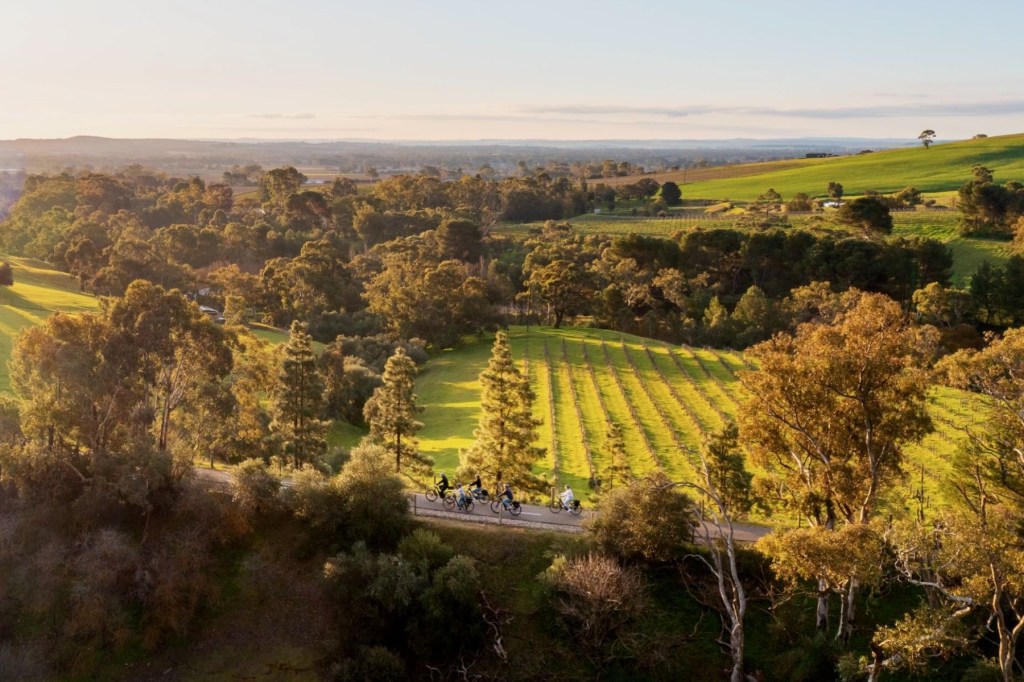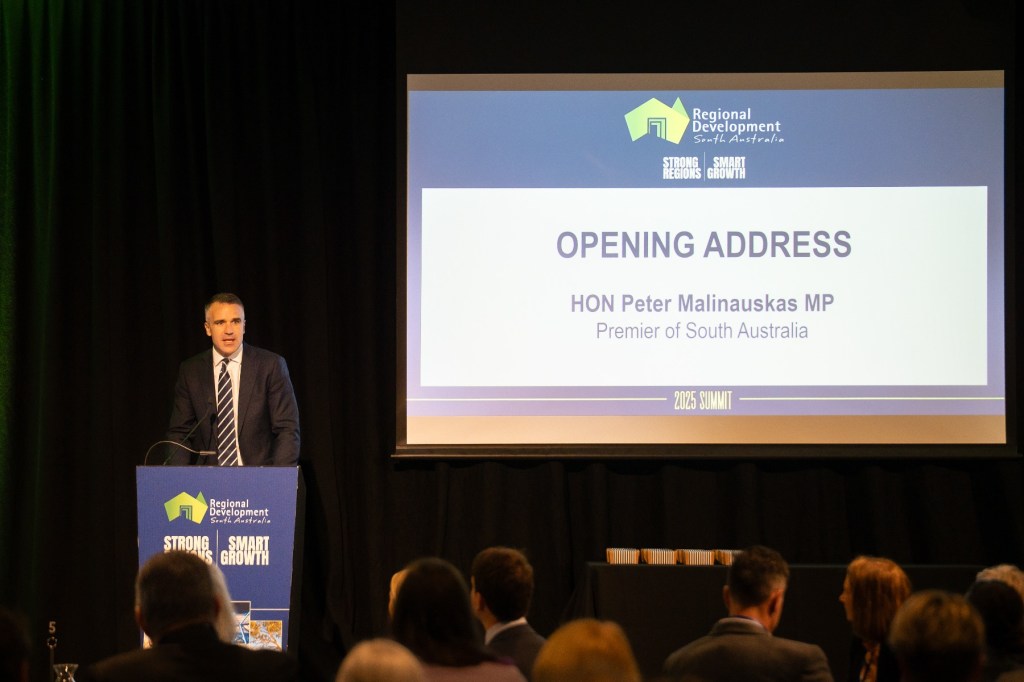The next frontier: Why South Australia’s future belongs to the regions
From vineyards that built a global wine reputation to mineral wealth that fuels international supply chains, South Australia’s economic heartbeat has always been written in its regions. Now, leaders say the next chapter will be defined not by what regions have done in the past, but by the opportunities they are poised to seize.

What if we do things differently?
That was the challenge for hundreds of decision-makers from across South Australia who gathered last week at the Adelaide Convention Centre for the 2025 Regional Development South Australia (RDSA) summit, exploring how the state’s regions can become engines of economic growth and innovation.
Opening the summit, Premier Peter Malinauskas underscored the central role of regional industry in South Australia’s history and future. “There has never been a South Australia that hasn’t depended heavily on regional industry,” he said, noting that regional communities have long sustained the state’s economy and continue to hold the key to its future prosperity.
The Premier highlighted opportunities in renewable energy, critical minerals, agri-tech, and emerging sectors such as space industries, positioning regions as launchpads for new growth.
RDSA is the peak body for driving regional development across South Australia. The summit marked the release of the organisation’s Strong Regions, Smart Growth strategy, which sets out a vision of regions that are not only productive but innovative, competitive and resilient.
The strategy calls for collaboration and innovation across sectors and government levels to back local businesses, build leadership capacity and shift perceptions so that regional towns are seen as centres of opportunity rather than remote outposts.
Alison Lloyd-Wright, managing director of The Good Trouble Group, said the approach is about embracing bold ideas. “If we do what we’ve always done, we’ll get what we’ve always got,” she said. “But, if we’re willing to do things differently, we can unlock the full potential of our regions.
You might like
“If you want to know where South Australia’s next chapter is coming from, you don’t have to look up at the city skyline. Look outwards – to our regions. This isn’t about the regions ‘catching up’. It’s about unlocking growth that lifts the whole state.”
Regional communities already contribute disproportionately to South Australia’s economy. Minister for Primary Industries and Regional Development Clare Scriven highlighted that, while regional areas account for 28.6% of the state’s population, they contribute around $38.2 billion to the economy and generate nearly half of South Australia’s overseas merchandise exports. Industries such as agriculture, viticulture, forestry and horticulture remain the foundation of this prosperity.
Leadership development is also a key focus. By next year, around 600 community members will have participated in RDA leadership programs across 42 locations, strengthening local talent and supporting community-led initiatives. “It’s wonderful to see the breadth of talent we have in our regions,” Minister Scriven said. “It’s good for individuals, good for communities and good for the state.”

South Australia’s regions are also leveraging their unique natural assets. Barossa Valley’s global reputation for wine exemplifies the potential for place-based industries to thrive on a world stage, and leaders believe similar opportunities exist across food, tourism, and agri-tourism ventures.
Tori Dixon-Whittle, CEO of Food SA, said regional producers can amplify the state’s strengths by connecting visitors with producers and delivering premium food exports with a distinctly South Australian story. “In a world hungry for authenticity and sustainability, our regions are well placed to deliver,” she said.
The energy transition is creating further opportunities. Solar, wind and hydrogen projects are reshaping towns from Port Augusta to Whyalla, while critical minerals such as copper, rare earths and magnetite are positioning South Australia as a supplier for decarbonised global industries.
“The global steel industry is looking to decarbonise,” said Sam Crafter, state lead of Whyalla Steelworks Industrial Transformation. “You need a decarbonised iron product, and that’s what we can produce here.”
The summit emphasised that regional development is about more than resources – it’s about reshaping global markets, fostering innovation and building resilience. By backing local talent, investing in infrastructure and taking a strategic approach to industry growth, South Australia’s regions are poised to drive the state’s next era of economic prosperity.
As the Premier noted, South Australia currently enjoys strong economic momentum, with recent ABS data showing it is the fastest-growing economy on the Australian mainland. From large-scale projects like the Northern Water Project to community-led agricultural ventures, the state’s regions have the potential to deliver intergenerational benefits, ensuring growth that is both inclusive and sustainable.

RDSA executive chair Rob Kerin said the summit offered “a pivotal platform to position regions at the forefront of state growth and development”.
“This year’s summit reinforced that we have a chance, as a state, to take a fresh approach to the development of our regions,” he said. “Not tinkering at the edges. Not waiting for crises to force our hand. But choosing, deliberately, to design a future that’s bigger, bolder and better for all of us.
“Our aim is to shine a spotlight not just on the challenges we face but, most importantly, on the immense potential that exists in our regions.
“But delivering on that potential requires intentional action, collaboration, and a shared vision. A vision that puts regions where they belong – at the centre of South Australia’s growth and transformation.
“A vision of regions that are not just productive, but prosperous and fiercely competitive. Regions that drive greater economic complexity, fuelling innovation and resilience for the whole state.
“Regions that are not only strong in industry but also vibrant, liveable and attractive places where people want to build their lives. Because when we hold this vision together – government, industry, communities – we stop thinking of regional development as a problem to be solved and start seeing it as the opportunity that can define South Australia’s future.
“RDSA looks forward to working closely with key partners to turn this vision into reality.”
Copies of the presentations from the summit are available from regionaldevelopmentsa.com.au/2025-annual-summit/











